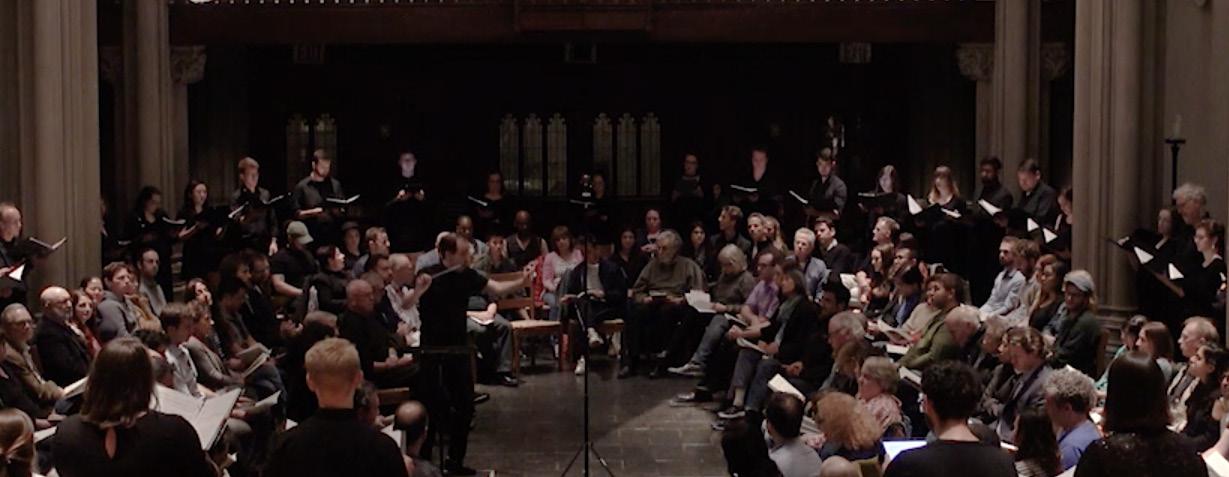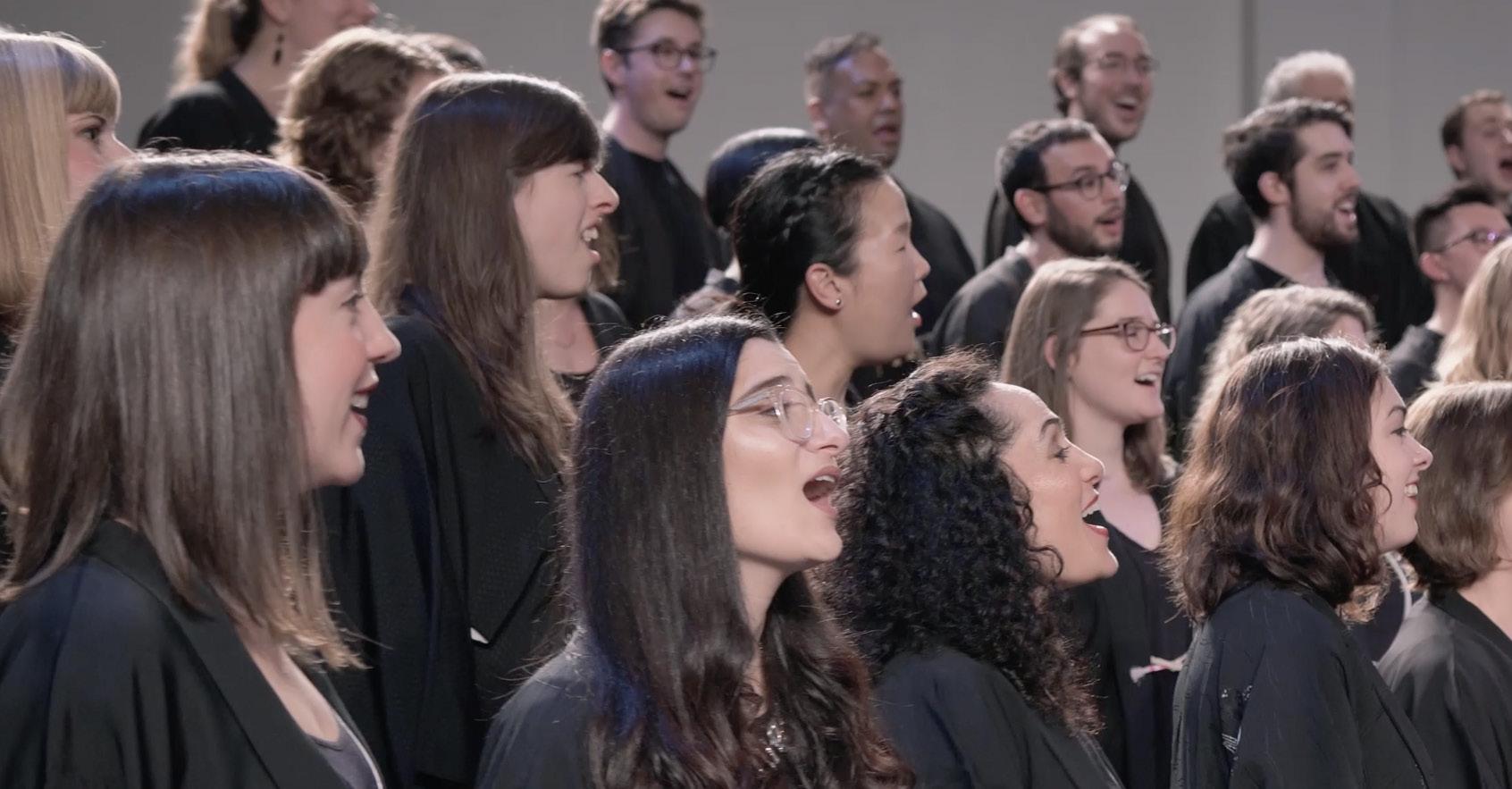
2 minute read
Artistic Director’s Note
Vince Peterson Founder and Artistic Director
The 2018-2019 Season brought much joy and artistic richness to the Choral Chameleon family. I am particularly grateful this year to have worked with several extremely gifted artists in bringing their new pieces to life.
Advertisement
There are two artist highlights, in particular, who I’d like to mention here. The first is our Composer-In-Residence for this year, Dale Trumbore. The Composer-in-Residence program was a more substantial endeavor than have we have taken on before. We devoted much of the season to larger works. Still, the two shorter pieces that Dale wrote for us were all the more critical because they balanced out programs dominated by evening-length works.
As far as Dale’s work is concerned, she gave us two completely different pieces, both of which were wonderful. Her piece for the Chorus, “What Are We Becoming,” was an arrestingly vulnerable snapshot of human civilization at this moment in history. For me, it was a panoramic, universal viewpoint on the human condition in relationship to adversity, war and corruption. It did precisely what I always want a piece of music that substantial to do for CC: it spoke to people on a personal level while also providing an experienced level of harmonic and melodic richness and integrity. It spoke to the singers on a scale far more profound than we had even anticipated. This catharsis beautifully reflected in their singing. The fact that she achieved this effect with such poise and humility was essential to us.
For the Ensemble, she composed “Footnotes to A History of Music.” This through-composed, yet cohesive single-movement work was a vivid and whimsical narrative reflective of its text, written by Kristina Marie Darling. It annotates an encyclopedia entry defining music to invoke the sense of the uttered words and images coming to life and flying off the page. In all our years of premiering new choral works, we’ve rarely, if ever, seen works this charming or whimsical. The Ensemble enjoyed singing this work, and the audiences were captivated by it.
In the fall, we collaborated with Eri Yamamoto, who is a New York institution of a jazz pianist. She wrote a new work called “Goshu Ondo Suite,” which means to recreate the experience of singing and dancing in the Japanese Obon summer festival each year, an experience she recalls from her childhood. This work married the contours of traditional Japanese melodic lines with the quartal, metropolitan harmonies that are trademarks of her unique style in jazz. If it can’t be considered a quintessential musical example of the great American melting pot, I don’t know what can. Because the piece touched on so many distinct, yet independently recognizable traits, it felt familiar and comfortable by turns, then adventurous and educational by others. The soul of the singer could be felt in the work as it was conceived, first and foremost, through singing. It was one of Choral Chameleon’s most significant projects to date,







